Kentucky Pesticide Safety Education Program

Questions?
Contact
Dr. Ric Bessin
Dept. of Entomology
University of Kentucky
859-257-7450
rbessin@email.uky.edu
Adapted from North Central Regional Extension Publication No. 241, Carole A. Lembi, Aquatic Weed Specialist, Purdue University and Aquatic Pest Control, University of California Leaflet 2961
Aquatic Weed Identification
Identification is the first and most important step in managing aquatic weeds. Most control methods target specific weeds or groups of weeds with similar growth habits. Aquatic weeds are divided into two botanical groups; algae and flowering plants. Algae are usually structurally very simple with no apparent roots, leaves, or stems. However, some (for example, Chara) can resemble flowering plants. Flowering plants have roots, shoots, shoots, and stems. You must be able to distinguish between algae and flowering plants to make effective chemical control decisions.
Algae
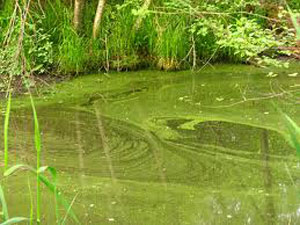
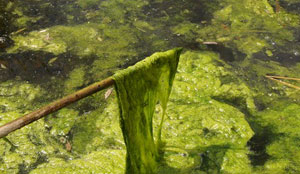
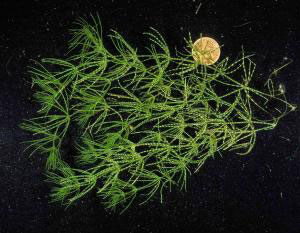
Jim Rathert, courtesy of Missouri Dept. of Conservation
Flowering Plants
Flowering plants can be grouped into broad categories according to where they are found in a body of water.
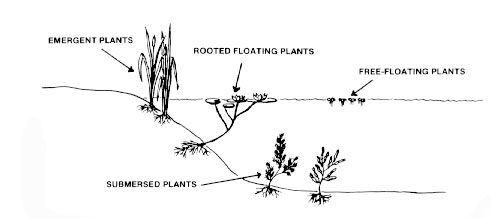
Emergent Plants
Emergent (shore or marginal) plants commonly include cattails, bulrushes, spike rushes, reed canarygrass, and other grass-like perennial plants. Broadleaves include willow trees and creeping water primrose.
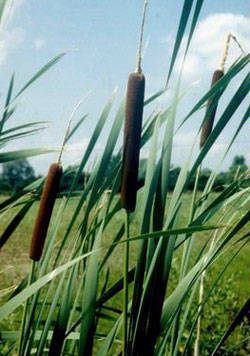
Cattails
Ohio State Weed Lab, The Ohio State University, Bugwood.org
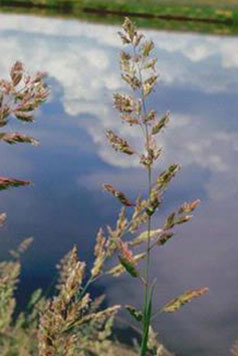
Reed canarygrass
John M. Randall, The Nature Conservancy, Bugwood.org
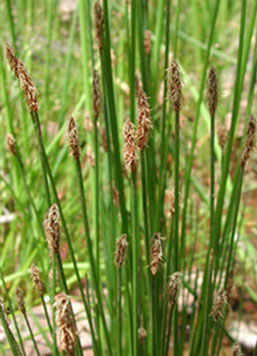
Spike rush
Max Lichner, USDA Forest Service

Willow
Paul Wray, Iowa State University, Bugwood.org
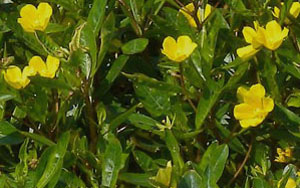
Creeping water primrose
John Hilty, Illinois Wildflowers
Floating Weeds
Rooted Floating Plants
Rooted floating plants include water lily, spatterdock, and water lotus. Spatterdock is very competitive and can completely fill in shallow areas less than 3 to 4 feet deep. New spatterdock plants sprout from massive underground rhizomes. It differs from waterlily in having heart-shaped leaves that come above the surface of the water and a yellow flower. Waterlily has round leaves.
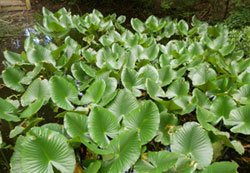
Spatterdock
Rebekah D. Wallace, University of Georgia, Bugwood.org

Water lily
Becca MacDonald, Sault College, Bugwood.org
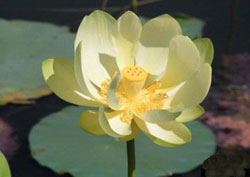
Water lotus
Kelle Sullivan, Florida Fish and Wildlife Conservation Commission, Bugwood.org
Free-Floating Plants
Free-floating plants, such as duckweed and watermeal are extremely small seed-bearing plants that float free on the water's surface. They never become rooted in the soil, and reproduce by sexual and asexual means. They can completely cover the surface of a pond. Both plants are found in nutrient-rich waters so inflow of wastewater from livestock feedlots, septic fields, etc. should be eliminated.
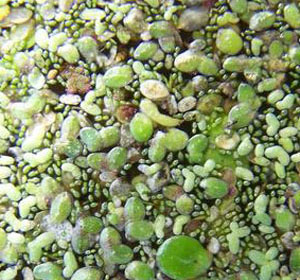
Duckweed
Karan A. Rawlins, University of Georgia, Bugwood.org
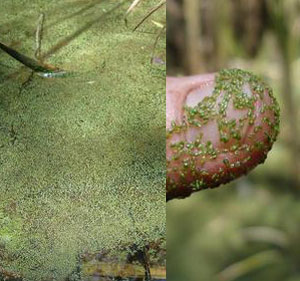
Watermeal
Graves Lovell, Alabama Department of Conservation and Natural Resources, Bugwood.org
Submersed Plants
Submersed plants are rooted in the bottom sediments and grow up through the water. Flowers or flowering spikes sometimes emerge above the water surface. The main criteria for identification are leaf arrangement and leaf shape.
Common Underwater Weeds
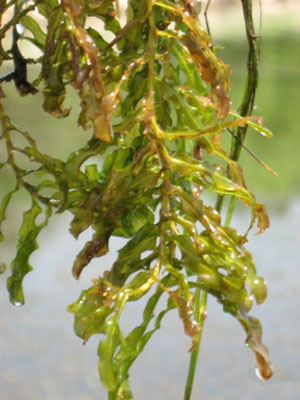
Chris Evans, University of Illinois, Bugwood.org
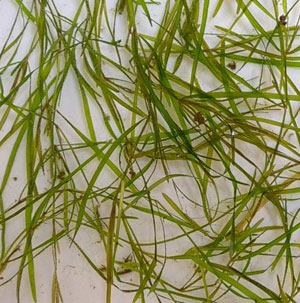
John Hilty, Illinois Wildflowers
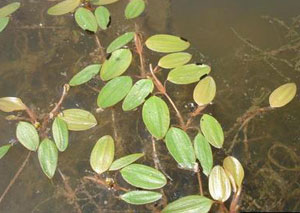
Graves Lovell, Alabama Department of Conservation
and Natural Resources, Bugwood.org
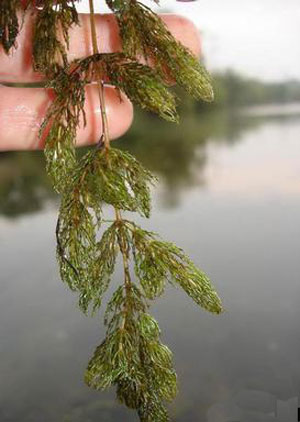
Graves Lovell, Alabama Department of Conservation
and Natural Resources, Bugwood.org
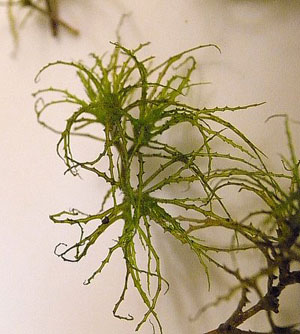
John Hilty, Illinois Wildflowers
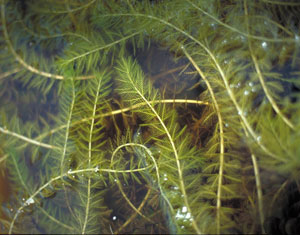
Alison Fox, University of Florida, Bugwood.org
[return]
1) ____________ are the base of the aquatic food chain.
2) Blooms are caused by _____________.
3) Spatterdock is a very competitive ____________ that can be found in shallow areas of impounded water.
4) Algae do not have apparent roots, stems, or leaves.
5) Which of the following is a free-floating weed?
6) ________ can be recognized by its bottlebrush leaf arrangement.
photo credits: banner image-Karan A. Rawlins, University of Georgia, Bugwood.org
website content by L. Townsend website design by P. Dillon copyright © 2016 University of Kentucky Department of Entomology
University of Kentucky College of Agriculture |
S-225 Agricultural Science Center North, Lexington, KY 40546-0091 | 859.257.7450
An Equal Opportunity University |
Last modified
11/30/2018
